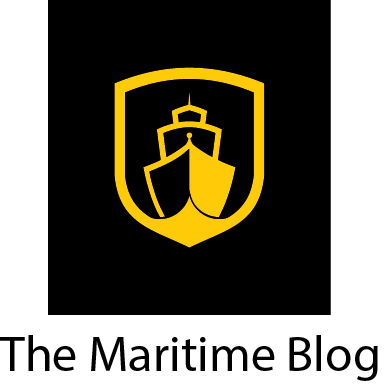 In its latest monthly report this week, OPEC said that in May, weak dirty tanker market sentiment continued, despite spot freight rates mostly showing gains from the previous month across a number of routes. Vessels of different sizes, in both clean and dirty sectors of the market, saw relatively positive developments. These came despite the market still suffering from limited activity prior to the arrival of the summer months. The increase in vessel supply, however, which has been persisting, prevented significant gains. On average, dirty tanker freight rates rose by 19% from the previous month, while average clean spot freight rates remained flat. Both dirty and clean spot freight rates showed some increases on certain routes in May, on the back of enhanced activities, tonnage list tightening, and port and weather delays. However, rate gains in both sectors were only relative and were insufficient to compensate for the losses caused by the increase in operational cost, as bunker prices in all ports went up.
In its latest monthly report this week, OPEC said that in May, weak dirty tanker market sentiment continued, despite spot freight rates mostly showing gains from the previous month across a number of routes. Vessels of different sizes, in both clean and dirty sectors of the market, saw relatively positive developments. These came despite the market still suffering from limited activity prior to the arrival of the summer months. The increase in vessel supply, however, which has been persisting, prevented significant gains. On average, dirty tanker freight rates rose by 19% from the previous month, while average clean spot freight rates remained flat. Both dirty and clean spot freight rates showed some increases on certain routes in May, on the back of enhanced activities, tonnage list tightening, and port and weather delays. However, rate gains in both sectors were only relative and were insufficient to compensate for the losses caused by the increase in operational cost, as bunker prices in all ports went up.
Spot fixtures
According to preliminary data, OPEC spot fixtures dropped by 0.5% in May, compared with the previous month, to average 13.48 mb/d. Global spot fixtures rose by 3.8% m-o-m, to average 20.34 mb/d. Fixtures on the Middle East-to-East route were up by 3.4% m-o-m, while on the Middle East-to-West routes they declined by 12.7% m-o-m. Outside of the Middle East, chartering activities were marginally higher than the previous month, but only by 0.2%.
Sailings and arrivals
OPEC sailings rose slightly by 0.02 mb/d, or 0.1%, in May from the previous month, reflecting a minor gain of 0.8% from the year before. Middle East sailings remained almost flat from the previous month, showing a marginal drop of by 0.01 mb/d, however, they remain higher from the previous year by 0.38 mb/d. According to preliminary data, arrivals at ports in different areas showed mixed movement. Arrivals in West Asian, European and North American ports showed a decline in May from the previous month by 0.5%, 4.1% and 8.3%, respectively. Vessel arrivals in Far Eastern ports, however, were the exception, as they showed an increase from the previous month by 7.6%
Very large crude carrier (VLCC)
VLCC spot freight rates were mostly weak in May, despite showing some relative gains, which came on the back of an active start to the month. VLCC spot freight rates rose on key trading routes, but earnings in the market showed no major enhancements, as the increase in rates remains limited. Combined with increasingly higher bunker prices, this kept market returns subdued. VLCC spot freight rates increased, though they were limited by the overhang of ships seen during the month. The ongoing low level in rates, along with the increase in operational costs, pushed ship-owners towards resisting the low rates as market returns became insufficient. Therefore, although VLCC spot freight rates showed minor average gains in May, these remain far from being able to compensate the increase in bunker prices. VLCC spot freight rates for tankers trading on the Middle East-to-East routes rose by 7% m-o-m, to stand at Worldscale (WS) 44 points. Spot freight rates on the West Africa-to-East route followed the same pattern, showing a similar increase by 8% m-o-m, or WS3 points, to stand at WS45 points. In contrast, Middle Eastto-West freight rates dropped on average, though slightly, by 4% m-o-m, or WS1 point, to stand at WS19 points. Freight rates for VLCCs in the transatlantic increased in May as tonnage availability tightened. Nevertheless, the higher rates encouraged vessels to ballast to the region, which eventually increased the availability there, ending the rise in rates.
Suezmax
Average spot freight rates in Suezmax went up in May showing some positive developments from one month before. This increase came despite the market having suffered from high vessel supply versus limited tonnage demand. The Suezmax market started the month with high activity in different regions, including the North Sea and Black Sea, which led to the clearance of the tonnage list, and a surge of activity in West Africa along with a temporary tightening in vessel supply. This allowed owners to push for higher rates. However, that did not last for long. The chartering activities slowed down and the rates softened afterwards, when all requirements were covered. Eventually, spot freight rates for tankers operating on the West Africa-to-US Gulf Coast (USGC) route rose by 16% m-o-m, to stand at WS62 points in May. Spot freight rates for tankers operating on the Northwest Europe (NWE)-to-USGC route went up by 17% m-o-m, to average WS56 points. Average rates in the USGC increased as a result of steady activity and weather delays. Nevertheless, Suezmax rates on both routes showed a decline compared with the previous year by 18% each. By the end of May, Suezmax was chosen occasionally as an alternative to Aframax, which showed rates firming at higher levels.
Aframax
Similarly to other dirty tanker developments, Aframax spot freight rates rose in May, compared to one month before. They reached a higher level than seen in other classes, showing an average increase of 25% m-o-m. Aframax had a slow start in the beginning of the month, with rates showing no significant changes from April, mainly in the North Sea and the Baltics. The situation varied across different markets at that point, while in the Black Sea and the Mediterranean, the tonnage list was balanced. The increase in spot freight rates was needed substantially to compensate the higher operational costs. Freight rates for tankers operating on the Mediterranean-to-Mediterranean and Mediterranean-to-NWE routes went up by WS31 points and WS27 points from the previous month, respectively, to average WS110 and WS101 points.
Spot rates in NWE increased m-o-m, as a result of the resistance of ship owners to lower rates in light of rising low sulfur bunker fuel oil (LSFO) prices, which exceeded more than $620/mt. This made voyages at lower rates not feasible, despite limited improvements in activity levels. Moreover, the improved sentiment in NWE came on the back of ullage delays in Rotterdam and an increase in replacement requirements. The Caribbean’s tonnage list cleared at the beginning of the month as a result of continuous activity. This led to rates firming with average spot freight rates increasing on the Caribbean-to-US East Coast (USEC) route by 12% m-o-m, to stand at WS109 points. Similarly, Aframax freight rates to eastern destinations showed another increase. The Indonesia-to-East route rose by 12% m-o-m, to average WS94 points.

























